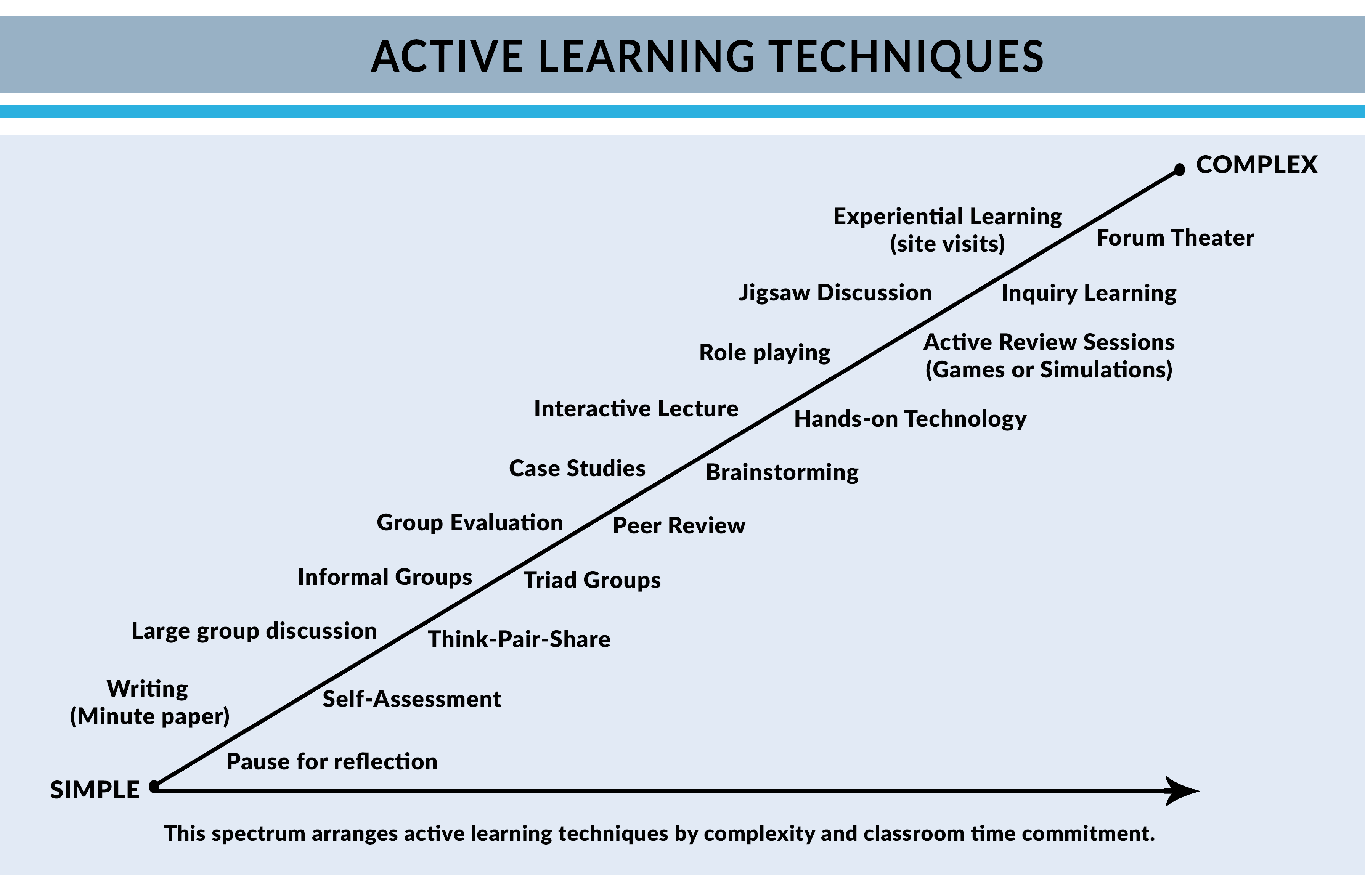
In the third and final step of the Backward Design, instructors will consider learning activities that align with the course assessments and learning objectives and that are best suited for the course content and teaching modality. Learning activities and assessments are interrelated and sometimes overlapping concepts. The key difference is grading. Generally, the purpose of a learning activity is to allow learners the opportunity for low-stake practice, it does not measure formal learning and is usually ungraded. In contrast, an assessment is a formal measurement of learning where some type of grading is assigned. If a learning activity is graded, it can be defined as an assessment.
Learning activities should be designed to actively move learners from passively listening, reading, and memorizing course concepts toward the use of higher-order thinking skills such as analysis, evaluations, and creation. As instructors employ such active learning strategies, they will witness learners gauging their own understanding of course content in real time. Additionally, active learning strategies can provide an accessible 'low stakes' invitation to participation for learners. Active learning also shows particular promise in STEM fields where those in active learning classes demonstrate improved exam scores and lower failure rates compared to learners in traditional lecture classes (Freeman et al., 2014). Active learning approaches have also been shown to reduce barriers experienced by underrepresented minorities and first-generation college students (Eddy & Hogan, 2014). With some flexibility, active learning strategies can be utilized in classes of all sizes and based on any academic discipline. Reflect on your instructional approach and identify areas where you can implement active learning strategies in your courses. See below for a range of strategies - from simple to more complex - designed to cultivate active learning in the classroom.
 Prepared by the Center for Research on Learning and Teaching, the University of Michigan along with a brief description of each active learning strategy. Other active learning approaches including flipped classrooms, icebreakers, community building, lectures and video, class discussions, small group work, problem-based learning, community-engaged learning, case studies, laboratory simulations, concept maps, and whiteboards are described more fully on dedicated pages on this website.
Prepared by the Center for Research on Learning and Teaching, the University of Michigan along with a brief description of each active learning strategy. Other active learning approaches including flipped classrooms, icebreakers, community building, lectures and video, class discussions, small group work, problem-based learning, community-engaged learning, case studies, laboratory simulations, concept maps, and whiteboards are described more fully on dedicated pages on this website.
Additional Resources
Vanderbilt University Center for Teaching: Active Learning
Vanderbilt University Center for Teaching Active Learning Cheat Sheet
Harvard University: Derek Bok Center for Teaching and Learning: Active Learning

